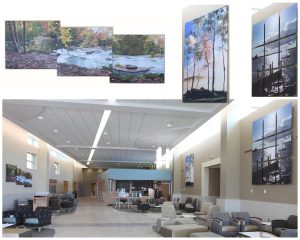 Circadian Lighting Strategies
Circadian Lighting Strategies
Excerpts from an article by Ed Clark and Marty Brennan, originally published in Healthcare Design Magazine March 2017
4 KEYS TO INTEGRATING CIRCADIAN LIGHTING STRATEGIES
1 . UNDERSTAND PEOPLE
Consider your building occupants’ schedules and how to consistently reinforce them. Understand where they will spend their time and provide the proper color and intensity of light to match their needs.
For circadian entrainment, daylight is the gold standard and is full spectrum, high intensity, and highly variable. Circadian supportive designs should default to daylighting solutions when able and use electric lighting as a supplement. Mimicking daylight patterns and timing should be done in all but the most northern and southern latitudes, where the hours of daylight are reduced and extended light exposure is beneficial. For typical schedules, warm low-intensity light should begin and end the day, with the coolest and brightest intensity occurring midday.
2 . U N D E RSTAN D TH E LI G HT SOURCES
This includes the spectral power distribution of the lighting source in addition to aesthetic color rendering. Spectral power distributions illustrate the relative intensity of specific wavelengths across the visual spectrum and inform a designer if a light source is high or low in the spectrum most impactful to the circadian system.
3. PROVIDE DETAILED CONTROL GUIDELINES
Specify lighting color and intensity as well as when shifts of color and intensity should occur throughout the day and night. Specify very gradual transitions so that the change of color and intensity is nearly imperceptible to occupants. Some perceived variation is beneficial, as subtle variation is one of the hallmarks of safe, natural environments.
4. MEASURE AND ADJUST
When commissioning the space, measure the color and intensity of the light within it. Specified or programmed light output from fixtures rarely correlates to measured spectral distribution and illumination levels. Use a photo spectrometer to understand the spectral composition of the light to ensure that design intent has been met.
For a pdf version click here: Photos for Healing Newsletter #120- Sept. ’17


